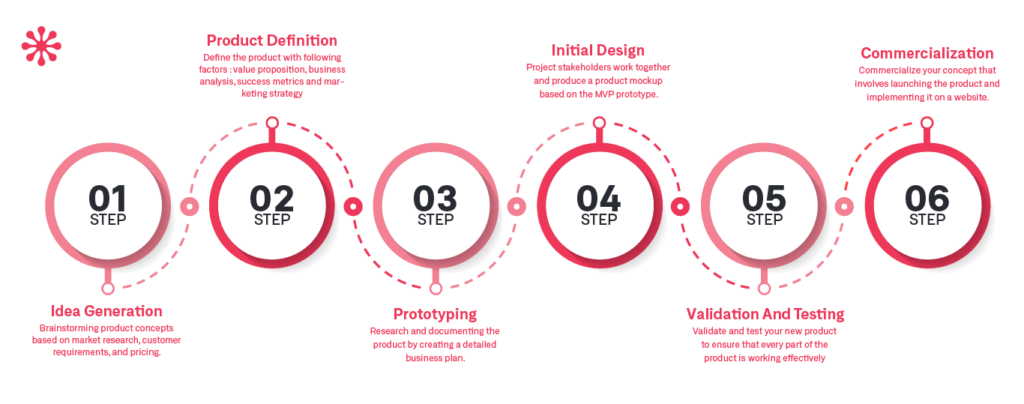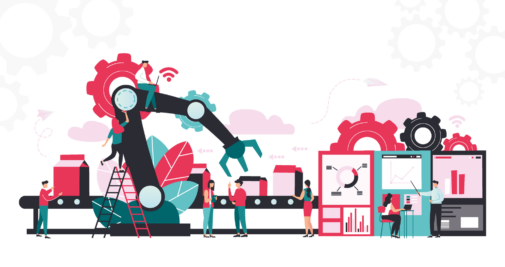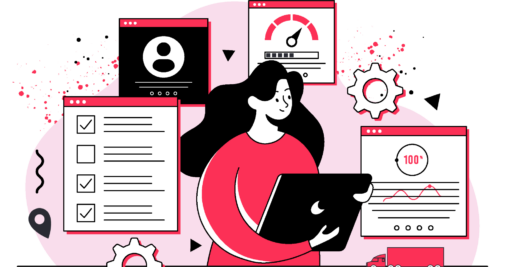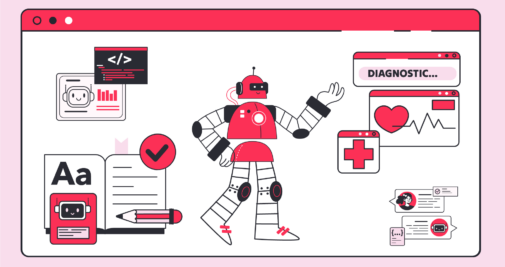This website uses cookies so that we can provide you with the best user experience possible. Cookie information is stored in your browser and performs functions such as recognising you when you return to our website and helping our team to understand which sections of the website you find most interesting and useful.
Introduction
Product development, also known as new product development, is the sequential process that involves reviewing an existing product or creating a new one for customers. The process steps involve idea generation, screening, designing, developing, and marketing newly produced products. Using a clear product development plan, companies can explore new product ideas and know what customers want in the early stages of conceptualization.
But why is there a need for product development? The main motive of product development services is to meet customers’ demands by growing, sustaining, and enhancing the market share of a company. But every product is not meant for every customer or client; therefore, it is essential to identify the target market in the early stages of product development. On the other hand, software development is a process used by companies to design and develop quality software. The main stages of a software development life cycle are requirements gathering, design, implementation, testing, and deployment.
Product Development Examples
Successful companies deploy well-defined product development strategies to understand their customers’ expectations and accurately plan the time and resources required to develop a product. Some examples of well-known companies that use product development are given below.
Google provides hundreds of products such as Youtube, Gmail, Chrome web browser, etc. The company is constantly innovating, but how does it develop successful products?
Google’s product development strategy follows a set of guiding principles and values mentioned below.
- Focusing On User – It means reaching out to the users and gathering data about their behavior and preferences to develop a product they will love to use.
- Thinking 10X – According to Google, true innovation takes place when you try to improve ten times rather than 10%. This approach makes Google one of the world-leading companies in the tech marketplace.
- Launching and Iterating – Google releases the early versions of its products as beta launches. After every launch, it carefully listens to its users for improving the products based on their feedback.
Netflix
Netflix is the world’s largest streaming service that follows a few principal concepts in its product development process mentioned below.
- The hypothesis is the initial step of Netflix’s product development cycle in which the team looks for ideas to increase member engagement.
- The second step involves designing a test to validate the hypothesis with real users. It creates a prototype to capture the essence of the product concept.
- The third step consists of the test itself. There can be hundreds and thousands of users testing the product.
Product Development Phases
Let’s see the six phases of the product development life cycle that can help in successfully launching a product.

Ideation (Idea Generation)
The first step of the product development cycle is generating new product ideas. It involves brainstorming product concepts based on market research, customer requirements, and pricing. When initiating a new product concept, it is essential to consider the following factors.
- Existing products – It is good to evaluate your existing product portfolio when you have a new product concept. You have to find out if any existing products solve a similar problem. If so, you have to check how the new idea is different enough to be viable.
- Target Market – The target market represents the customer profile you build your product for. It is mandatory to identify the target market at the beginning to build the product concept.
- Functionality – You should have a general understanding of the functions of the product. It is not necessary to have a detailed report of the product’s functionality, yet you should consider the look and feel of the product and why someone would be interested in purchasing your product.
- SWOT Analysis – You can do SWOT analysis early in the product development process to build the best version of your new concept. This analysis will ensure your product solves a market gap and is different from the competitors.
- SCAMPER Method – You can use brainstorming methods like SCAMPER to quickly develop the product ideas by asking questions about existing products. The letters in SCAMPER stand for substitute, combine, adapt, modify, put to another use, eliminate and reverse/rearrange.
Product Definition
After completing the business case and identifying the target market, it is time to define the product. During this stage, it is essential to consider the following factors.
- Value Proposition – It defines the problem that the product is solving.
- Business Analysis – It consists of mapping out eCommerce strategy, distribution strategy, and in-depth competitor analysis.
- Success Metrics – It helps clarify the success metrics to evaluate and measure the success once the product is launched.
- Marketing Strategy – It involves brainstorming a marketing strategy that fits your business needs.

Prototyping
This step involves performing research and documenting the product by creating a detailed business plan. During prototyping, you have to consider the following important factors.
- Market Risk Research – It involves analyzing the potential risks associated with the production of your product before it is created.
- Development Strategy – It involves planning tasks and estimating timelines using different techniques.
- Feasibility Analysis – It involves evaluating the product strategy based on feasibility and determining if the estimated timeline is possible to accomplish.

Initial Design
In the initial design phase, the project stakeholders work together and produce a product mockup based on the MVP (Minimum Viable Product) prototype. The essential factors to consider are:
- Connecting With Stakeholders – It is necessary to share weekly or daily progress reports and get approvals as needed.
- Receiving Initial Feedback – You can ask the senior management and project stakeholders for initial feedback when the design is complete.
Validation And Testing
Before going live with a new product, it is essential to validate and test it to ensure that every part of the product is working effectively. In this phase, the essential factors to consider are:
- Front-end Testing – In this stage, you test the front-end functionality of the product to ensure it is stable for launch.
- Concept Development and Testing – This stage involves software development and the physical production of the initial prototype. The software development process generates customer-specific software that meets the customers’ demands within the agreed budget, time, and quality.
- Test Marketing – It involves testing the marketing plan for functionality and errors before producing the final product.

Commercialization
In this phase, you commercialize your concept that involves launching the product and implementing it on a website. The essential factors to consider are:
- Product Development – It consists of creating the product that has to be released to the customers.
- E-commerce Implementation – When the product is developed and is ready to be launched, the product development team transitions the eCommerce materials to a live state.
Conclusion
A well-defined product development process enables you to streamline each step with organized tasks and team collaboration. In product development, you need to understand the requirements of the clients and the technology constraints. However, you have to translate your requirement specifications into technical specifications or software code in software development. Every industry has its unique approach and journey in creating something new during product development. If you have to struggle during your product development process, remember that every product launched before yours had to overcome the same difficulties and challenges.
Lets repeat what we now know
What is the product development process?
Product development process steps involve idea generation, screening, designing, developing, and marketing newly produced products. Using a clear product development plan, companies can explore new product ideas and know what customers want in the early stages of conceptualization.
What are the 6 stages in the product development process?
1. Idea Generation
2. Product Definition
3. Prototyping
4. Initial Design
5. Validation and Testing
6. Commercialization
What is Product Development?
Product development, also known as new product development, is the sequential process that involves reviewing an existing product or creating a new one for customers.
Who Benefits from Product Development?
The main motive of product development is to meet customers’ demands by growing, sustaining, and enhancing the market share of a company. This means every company benefits from product development while not every product is meant for every customer or client; therefore, it is essential to identify the target market in the early stages of product development.



